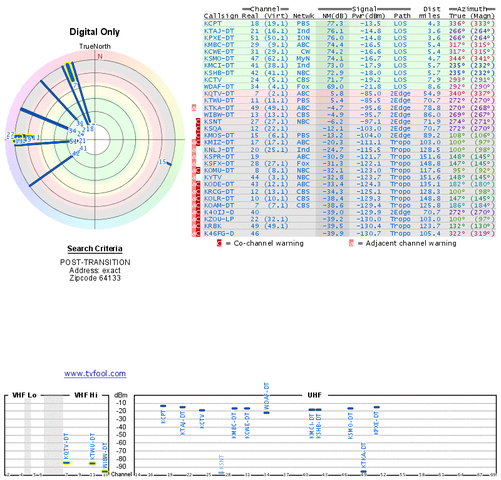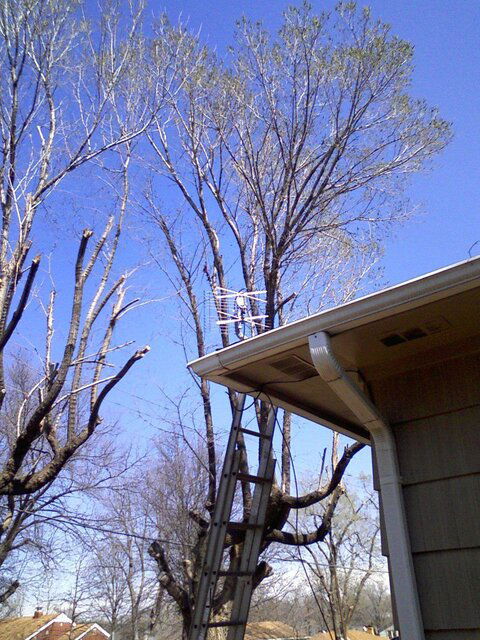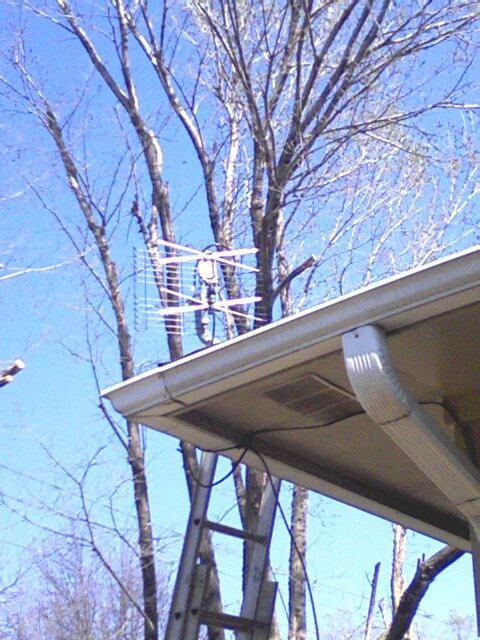I'm using a hand-built clone of a DB4 without the reflector inside my attic. It's okay, but doesn't get channel 42, which is about 90° off of "center mass" for the other transmitters. I built a 5-element YAGI for channel 42, and just used a splitter to combine the signals, and it didn't seem to hurt anything, but I'm not sure that it's roof-worthy.
I'm thinking about putting up a mast or a pair on the roof, and buying a couple of DB2s or CM-4220s to point perfectly off-axis. The Channelmaster Jointenna costs every penny as much as a DB2 does, while the Winegard CC-7870 clearly notes a 3.5dB loss when connecting two antennas. I've been all over the HDTV Primer, KYES Antennadex, and other sites strongly cautioning me to not plug two antennas into each other, but never saw an example that fits my problem.
The question is the theoretical effect of just combining the signals without an inserter. What happens to the polar diagram of a DB2 when you electrically connect it to another that's perpendicular? What would happen with if one was a DB2 and the other was a DB4? What if I put them 3' or 4' apart from each other?
I'm thinking about putting up a mast or a pair on the roof, and buying a couple of DB2s or CM-4220s to point perfectly off-axis. The Channelmaster Jointenna costs every penny as much as a DB2 does, while the Winegard CC-7870 clearly notes a 3.5dB loss when connecting two antennas. I've been all over the HDTV Primer, KYES Antennadex, and other sites strongly cautioning me to not plug two antennas into each other, but never saw an example that fits my problem.
The question is the theoretical effect of just combining the signals without an inserter. What happens to the polar diagram of a DB2 when you electrically connect it to another that's perpendicular? What would happen with if one was a DB2 and the other was a DB4? What if I put them 3' or 4' apart from each other?






